
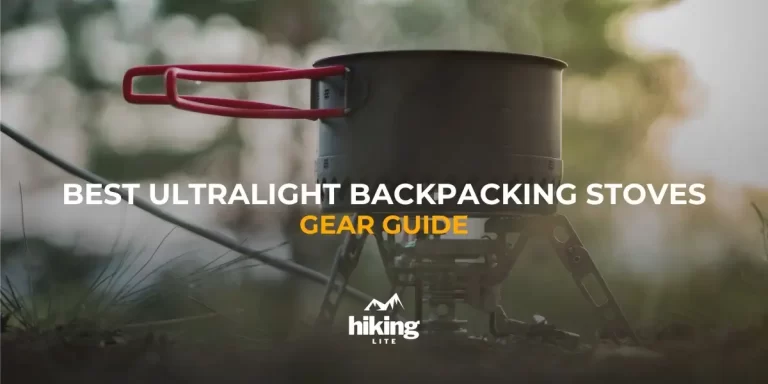
When venturing into the wilderness, your backpacking stove is a crucial piece of equipment that enables you to cook warm, satisfying meals during outdoor adventures no matter how far from civilization you roam.
However, with so many stove models on the market, it can be challenging to identify the best ultralight backpacking stove for your specific needs and trip plans.
This guide is designed to simplify the selection process. In the first part, we’ll explore some of the most popular lightweight models currently available.
In the second half, we’ll discuss key factors to evaluate like weight, fuel type, efficiency, reliability and budget.
In the end, we want you to be able to pick a stove that makes your outdoor adventures better, not worse. Let’s begin!
Keep exploring by reading on, or if you prefer, you can watch a summary video:
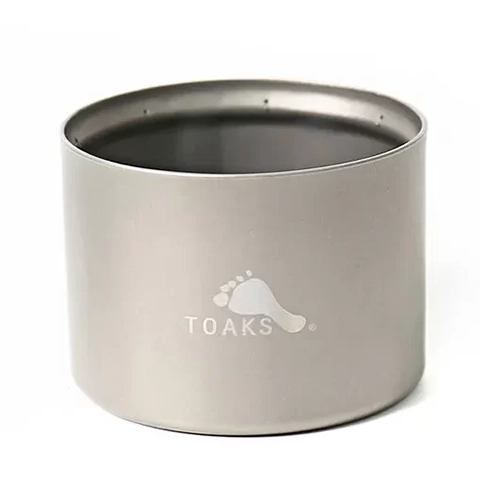
Key Specs
Weight: 0.7 ounces (20 grams)
Fuel: Alcohol
Price: $$
PROS
✅ Ultralight
✅ Durable
CONS
❌ Relatively expensive
❌ Not the best for large water quantities
The Toaks ultralight backpacking stove is a dependable choice, thanks to its lightweight titanium build, efficient capillary hoop design, and quick boiling capability.
Its versatile size and compatibility with various pot stands make it a convenient option. However, it’s best suited for boiling two cups of water; larger quantities may require refueling. Therefore, it’s recommended for individual use.
We can highlight its reliability in various conditions and its ability to provide both rapid boiling and simmering options. So, whether you’re a seasoned backpacker or just starting out, this stove is a valuable addition to your gear collection.
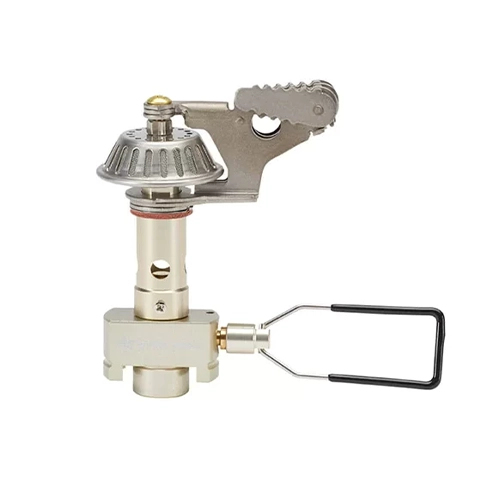
Key Specs
Weight: 1.97 ounces (56 grams)
Fuel: Gas
Price: $$$
PROS
✅ High quality
✅ Powerful output
✅ Impressive heat control
CONS
❌ Not the most efficient option
The Snow Peak ultralight backpacking stove stands out with its high-quality materials and a design that’s both lightweight and foldable, making it ideal for ultralight backpackers.
Although it may consume a bit more fuel compared to some alternatives, its robust BTU output guarantees fast boiling times. Both users and we can attest to its remarkable heat control, making it an excellent choice for even the most meticulous cooks.
What sets the Snow Peak apart? It excels in boiling large quantities (around half a gallon) at once, making it perfect for larger groups. Therefore, if you’re seeking a reliable option and often venture outdoors with companions, this stove is the ideal choice for you.
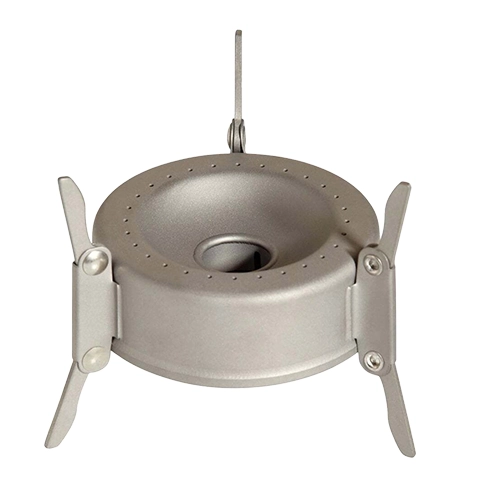
Key Specs
Weight: 0.85 ounces (24 grams)
Fuel: Alcohol, fuel tabs or fuel gels
Price: $$$
PROS
✅ High quality
✅ Good for various pot sizes
CONS
❌ Relatively expensive
❌ Tricky to use
The Vargo Triad Multi-Fuel Stove, with its sturdy titanium construction and adaptable fuel compatibility, is crafted for ultralight backpackers in search of a dependable cooking solution.
However, it’s important to note that without a specific method, the heating process can take longer and be frustrating. Users recommend using a DIY primer pan or filling the stove completely for faster and more efficient performance. Filling it to the top creates a seal, allowing vapor to come out of the jet holes for proper blooming.
The stove’s innovative features, including foldable legs and pot supports, make it a practical choice for various pot sizes. While it may require a bit of experimentation and adaptation, the Triad stove can provide efficient and lightweight cooking experiences on the trail.
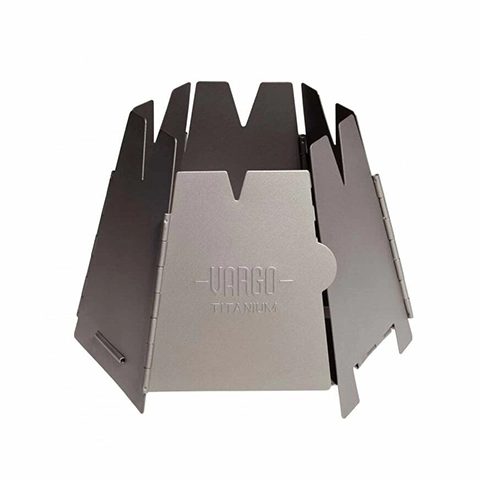
Key Specs
Weight: 4.09 ounces (116 grams)
Fuel: Wood
Price: $$$
PROS
✅ Don’t need to carry extra fuel
✅ Slim pack size
CONS
❌ Not as fast as other options
❌ Relatively expensive
The Vargo Titanium Hexagon Wood Burning Stove enables you to utilize renewable wood fuel, eliminating the need to carry extra supplies.
Its simple foldable structure, complete with swinging door and conical shape, streamlines the cooking process. While it may require some adjustments, such as drilling additional holes for enhanced performance, we have found it to be a reliable and efficient wood stove.
With careful use, it can function as both a windscreen and wood stove, providing excellent heat control and fuel efficiency. We would choose the Vargo if we were heading out in colder weather for that occasional firepit experience.
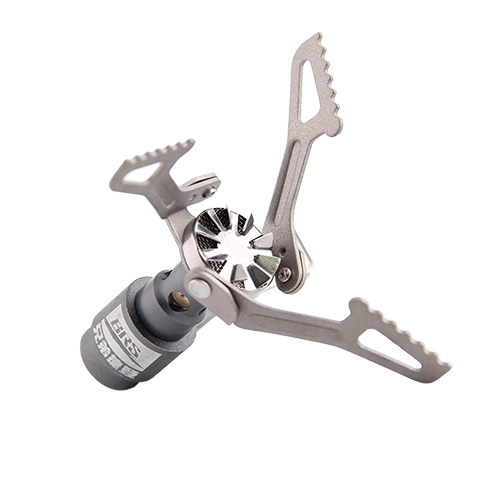
Key Specs
Weight: 0.92 ounces (26 grams)
Fuel: Gas
Price: $
PROS
✅ Extremely affordable
✅ Small pack size
CONS
❌ Not the most efficient option
❌ Hard to avoid replicas
The BRS Outdoor ultralight backpacking BRS-3000T shines with its fast boiling time and stable flame, it’s been a practical choice for backpackers prioritizing weight and size.
While lacking an ignition system, its affordability and reliability make it a great starter option for new ultralight backpackers. The stove’s compatibility with various pot types adds to its versatility.
The main drawbacks of the BRS stove include its lower efficiency compared to competitors, resulting in higher fuel consumption, and the presence of many replicas in the market with uncertain quality.
Furthermore, the short support legs may not be ideal for high-efficiency pots. Despite these concerns, we have used this stove for several years and have been satisfied with its performance.
Buying the right backpacking stove is all about finding the balance between convenience and adaptability. There are various options to consider, each with its own pros and cons:
To pick the right stove, consider factors like fuel type, weight, size, and cooking needs. In our experience, canister and alcohol-burning stoves are reliable and budget-friendly, enhancing your outdoor cooking experience.
In the end, make sure that the stove you choose is portable and fits your backpack. If you want to learn more about different stove types, check out our post here.
If safety is your priority, choose stoves that are strong and steady, with wide bases and rubber feet to avoid tipping. Make sure the fuel lines and connectors seal tightly to prevent leaks. Pick stoves with built-in starters instead of relying on matches, and check for good flame control. Safety is key, so look for features that prevent accidental gas discharge and have effective windscreens to shield the flame. If the stove gets knocked over, auto-shutoff valves are a plus. Also, go for fuel canisters that are designed to resist punctures and leaks.
When using backpacking stoves, they’re designed to quickly boil water, but many models also let you simmer food. Look for stoves with good flame control, allowing you to turn the heat down low for a steady small flame. Models with wider burners and heat exchangers work better for simmering. Windscreens help keep the heat for simmering. Use a small pot and avoid overloading it to allow food to simmer. Bring a small skillet or pot with a heavy bottom that holds heat, and keep the ingredients to a minimum. While backpacking stoves may not simmer as well as home stoves, many models can still effectively simmer food with some care and technique.
Many backpacking stove models are designed to resist wind with special features. Effective windscreens are a common feature, usually made of aluminum or titanium panels that surround the burner to block the wind. Some stoves have heat exchangers that warm the fuel before it enters the burner, making it less likely to go out in the wind. Piezo ignition allows for push-button lighting instead of using matches, which can be affected by the wind. Certain models come with magnetic valves for improved flame control to withstand gusts. Insulated pot stands help protect the flame in windy conditions. Canister stoves often work better than liquid fuel models in the wind due to their wider and more stable bases. Choosing a stove with multiple wind-resistant technologies will give you the best performance in exposed conditions.
When you use a backpacking stove at your campsite, it’s crucial to follow some basic safety rules. Choose an open area that’s at least 15 feet away from tents or anything flammable before starting your stove. Clear away dry leaves, grass, or other debris from the area. Keep the stove level and steady to avoid tipping, and don’t overload pots, as it can shift the center of gravity. Allow the stove to cool completely before changing canisters or packing it away. Always follow the guidelines and warnings provided by the manufacturer when using liquid fuel stoves. During fire bans, be extra cautious with your backpacking stove. Check with local authorities for restrictions, as some bans may prohibit open flames entirely.